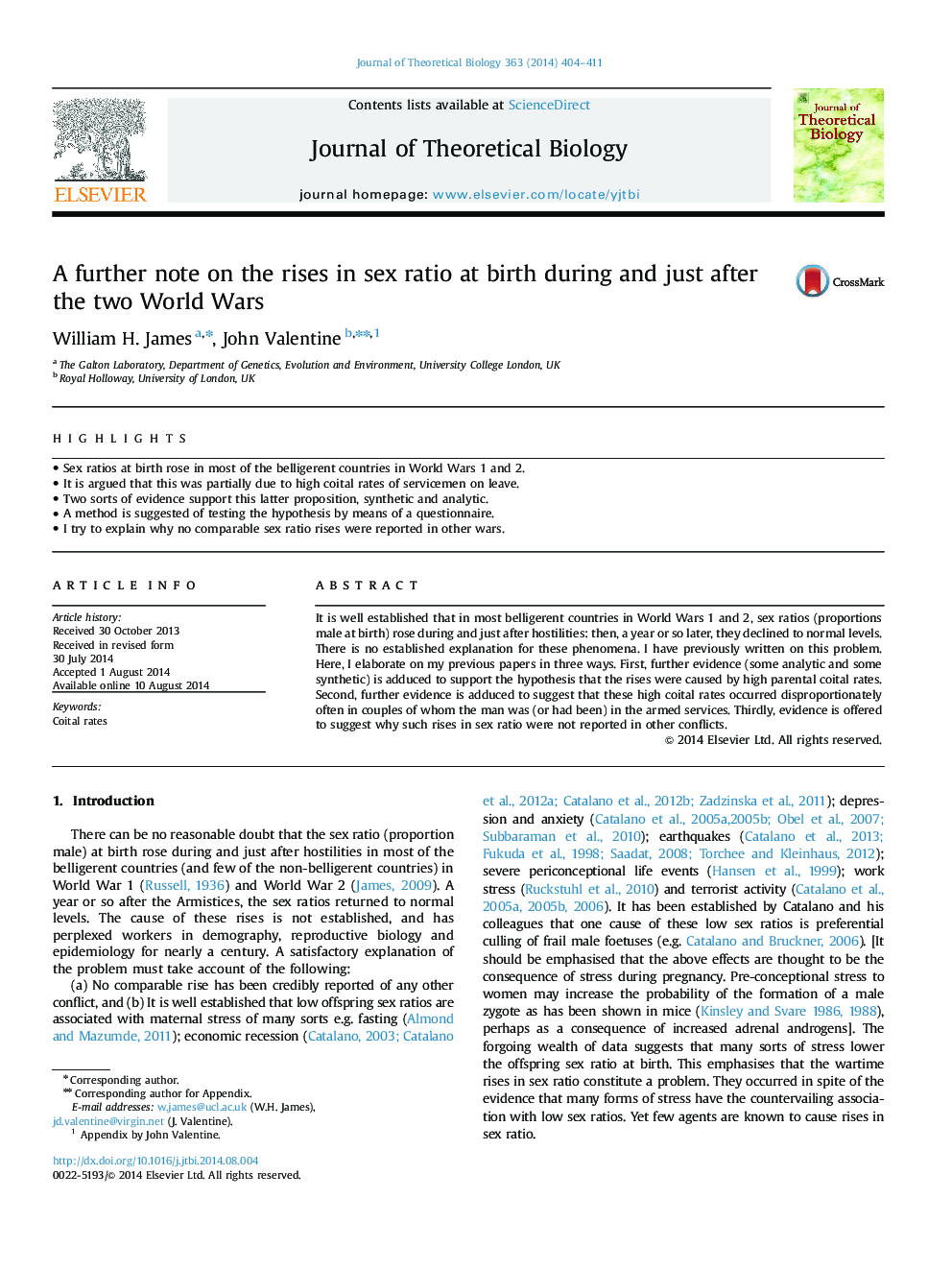| Article ID | Journal | Published Year | Pages | File Type |
|---|---|---|---|---|
| 6370254 | Journal of Theoretical Biology | 2014 | 8 Pages |
Abstract
It is well established that in most belligerent countries in World Wars 1 and 2, sex ratios (proportions male at birth) rose during and just after hostilities: then, a year or so later, they declined to normal levels. There is no established explanation for these phenomena. I have previously written on this problem. Here, I elaborate on my previous papers in three ways. First, further evidence (some analytic and some synthetic) is adduced to support the hypothesis that the rises were caused by high parental coital rates. Second, further evidence is adduced to suggest that these high coital rates occurred disproportionately often in couples of whom the man was (or had been) in the armed services. Thirdly, evidence is offered to suggest why such rises in sex ratio were not reported in other conflicts.
Related Topics
Life Sciences
Agricultural and Biological Sciences
Agricultural and Biological Sciences (General)
Authors
William H. James, John Valentine,
